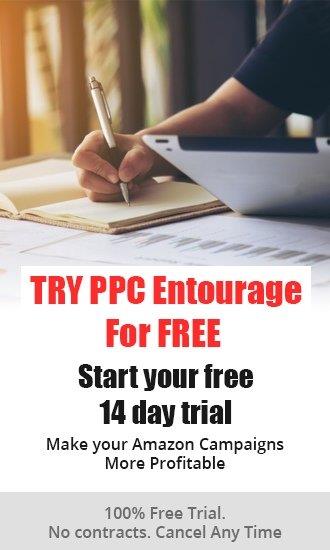The number of sellers and brands leveraging Amazon advertising keeps growing, not just daily, but from hour-to-hour. As the competition for consumer attention and their dollars continues to intensify, as an Amazon seller, you should be looking to kick your advertising game up a notch or two.
These 4 Amazon advertising tips will help you to make more money selling on Amazon without costing you a lot of Ad Spend or time.
Tip #1: Know Your Audience.
Knowing your target audience and how to reach them is arguably one of the most important steps for getting better results from your Amazon advertising.
Pinpointing your target audience is an essential step in the development of your products and the marketing efforts used to promote them. Taking time to know your audience helps you to improve your marketing copy, ads, targeting and relevance.
To communicate effectively with your target audience, you need to understand who they are, and what their true needs/desires are.
You should ask yourself what problem or desire your product(s) solve. Online shoppers don’t buy products just to have them, they’re looking for a specific benefit. Identify what benefit your product provides, and you can reverse-engineer who will be your best target audience because those are people who want the solution you’re offering. Build an image of what that ideal online shopper looks like so that you can best appeal to them.
Here are five ways to facilitate this process:
- Dig into your Search Term Report. With Sponsored Product search term report results, you can see which search terms generated sales results in comparison to the Ad Spend. Your most profitable keywords will be the ones with low cost per sales rates. These profitable keywords are exactly how online shoppers find your products, so you’ll want to focus on them. If you don’t already have these keywords in your title and description, add them in.
- Look at ASINs. They will provide useful clues about the types of products that are of interest to your target audience. Harvested them from your Automatic campaigns and from Category Targeting campaigns.
- Read reviews. These can be a source for creating unique headlines for your listings and for describing the problem your product solves or other benefits to the consumer once purchased. With a clearly defined target audience, every detail of a product can be perfectly tailored to their needs and desires.
- Review your Brand Analytics. Your Market Basket Analysis Report will reveal the primary item that your target audiences are shopping for, along with what other items are in the cart (what they typically purchase together). This allows you to create more insightful and persuasive copy. Now that you know what they’re like, you can make informed choices about how you structure your product descriptions, set your pricing, establish your keywords, set up your featured products advertisements, and all other aspects of your marketing.
- Target audiences that are outside of Amazon. Gather useful intelligence from those online shoppers who are not on Amazon but can still provide insights for improvements to your ad copy and for product targeting campaigns. Create product descriptions and marketing strategies that appeal to them and bring the online shoppers that are most likely to buy from you to a place where they can do just that.
Tip #2: Focus on establishing, maintaining, and staying within your Ad budget.
Pay attention to match types. Amazon advertising uses Broad, Phrase, Exact, and Negative match types to refine targeting. The key is to use a combination of these match type options to get ultra-targeted and reach the online shoppers with the highest level of purchasing intent.
Not all of your products have the same profit margin. Therefore, you cannot bid the same amount for all keywords. Be mindful of the relevancy of the keywords that you are targeting (especially when using Broad Match), especially if you are operating with a tight budget.
Using Broad Match type, you’ll be able to cast the widest net possible. Words can be added in the front, middle, or after your target keywords. This is the least targeted match type, but it can be useful to jumpstart campaigns and discover new useful keywords
Also, keep in mind that if your PPC campaigns are new, you’ll need to set higher bids to gain search history. At first, it may take some time to see campaign results. Be patient and wait to see results before making optimizations. Using advertising settings such as budget caps will allow you to stay within a specific budget to prevent overspending while waiting for results.
Tip #3: Schedule regular Amazon campaign optimizations.
Schedule to succeed. Schedule weekly or bi-weekly time to review all of the areas that you can make improvements/optimizations related to your Amazon advertising campaigns.
Breakdown your optimization sessions to run over a two-week period.
During week one, perform these tasks…
- Adjust budgets for scale – Direct more money towards those campaigns that are doing well.
- Optimize your zero Impression keywords – Optimize those relevant keywords with zero Impressions (increase bids).
- Optimize zero sales keywords – Optimize those keywords that are getting clicks, but no sales.
- Optimize your low click-through rate keywords.
- Optimize deep bid for Placements – (TOS, Rest of Search, Product Detail page) Goal is to drive traffic to placements that are converting well.
During the second week, perform these tasks…
- Selective Negative Phrase Matching – (Using this match type will restrict your ads to show for search queries that have the complete phrase or are a close variant of it.)
- Negative ASINs – Use negative ASINs in (manual) product targeting campaigns especially for category targeting. You will usually want to set poorly performing ASINs to negative (if an ASIN reaches a predetermined number of clicks without a conversion, make it a negative.)
- Low Converting Keywords – Consider lowering your bids for these keywords. By lowering your bids, you are limiting the potential loss in Ad Spend from another click that doesn’t result in a conversion.
- 90 Day Trends – Optimize by using this information to adjust bidding types (Fixed, Dynamic Down, Dynamic Up & Down).
- Careful Negative Exact – Negative Exact is useful when there is not a single, identifiable keyword that is causing wasteful Ad Spend. If you have to add a full search term as a negative keyword, negative exact is usually the safest and most effective method. Using negative exact keywords will block the connection between your target and the search term exactly as added.
Tip #4 Continuously Test New ASINs and Categories
Continuously look for new ASINs and categories to test. You should always be searching for new opportunities to improve the results you are getting from your Amazon advertising, by discovering new ASINs and categories that will convert well for you.
You can find new ASINs by combing through your Search Term Report, Brand Analytics, and using keyword software tools like PPC Entourage. Also, test categories across your Sponsored Products, Sponsored Brands and Sponsored Display campaigns.
Use these 4 tips to improve the results you are getting from your Amazon ads, and to better align with online shoppers’ purchasing intents.
If you are unsure as to how to obtain the maximum ROI from your Amazon advertising campaigns, our team of experienced experts can work with you to achieve your goals.
Entourage Management Services has opened applications. We can also manage your entire brand’s Amazon advertising, with no limits to number of products, countries, or ad types.
Click here to learn more about Entourage Management Services and to apply











